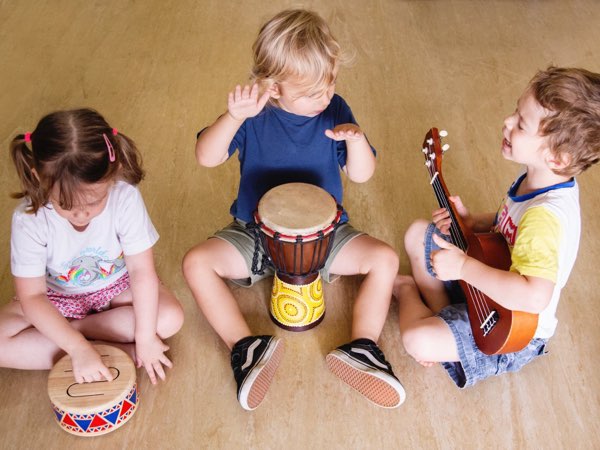
Many parents are surprised to learn that early learning centres don’t just provide care - they also follow a structured curriculum designed to support a child’s development from a young age. In fact, early education curriculums are thoughtfully created to promote cognitive, social, and emotional growth, giving children the best possible start in life.
In this post, we’ll answer the question, Do early learning centres have a curriculum?, and explore why a well-designed curriculum is essential for fostering lifelong skills. We’ll also introduce Affinity Education’s Lifelong Learning Curriculum, Australia’s most advanced approach to early childhood education. By focusing on play-based learning, school readiness, and holistic child development, the Lifelong Learning Curriculum ensures that children receive a comprehensive, enriching foundation.
Do Early Learning Centres in Australia Follow a Curriculum?
The answer is yes! Quality early learning centres in Australia are required to follow structured educational frameworks, like the Early Years Learning Framework (EYLF), which is the national framework guiding early childhood education. These curriculums are designed to help children achieve key developmental milestones, giving them the tools they need for academic and social success in later years.
The EYLF focuses on Belonging, Being, and Becoming, supporting a child’s sense of identity, connection, and discovery. It encourages early learning centres to provide an environment where children can explore, build relationships, and grow in all areas.
At Aussie Kindies, we take this a step further with Affinity Education’s Lifelong Learning Curriculum, a structured, research-backed approach that aligns with EYLF standards while introducing unique elements to foster deeper learning.
Why Is a Curriculum Important in Early Childhood Education?
A structured curriculum in early childhood education is essential for several reasons:
- Cognitive development: Activities are designed to introduce foundational skills in literacy, numeracy, and problem-solving, giving children a strong basis for future learning.
- Social and emotional skills: Through structured play and collaborative activities, children learn how to work with others, manage emotions, and develop empathy - skills that are crucial for building healthy relationships.
- School readiness: A well-rounded curriculum prepares children for a successful transition to primary school, helping them feel confident and capable when they begin formal education.
By following a curriculum, early learning centres ensure that each child receives the support they need in all areas of development, setting a solid foundation for lifelong success.
The Lifelong Learning Curriculum: Australia’s Most Advanced Approach to Early Education
At Aussie Kindies, we’re proud to offer Affinity Education’s Lifelong Learning Curriculum - a curriculum that combines traditional early education philosophies with the latest in child development research. This curriculum integrates methods like play-based learning, school readiness, and holistic development to create a truly comprehensive approach.
Here are some of the core components of the Lifelong Learning Curriculum at Aussie Kindies:
1. Play-Based Learning
Play is at the heart of our curriculum because research shows that young children learn best through engaging, enjoyable activities. In a play-based environment, children are encouraged to explore, experiment, and interact with others, which supports cognitive, social, and emotional development.
Example Activity: Exploring with Loose Parts
Children use materials like pebbles, blocks, and leaves to build structures or create art. This activity encourages creativity and problem-solving, allowing children to experiment with balance, patterns, and spatial relationships in a hands-on way.
2. School Readiness and Early Literacy
Our curriculum includes age-appropriate activities that build essential literacy and numeracy skills, preparing children for a smooth transition to primary school. By focusing on early literacy and numeracy, we ensure that each child is well-prepared to meet the academic expectations of school.
Example Activity: Storytime and Phonics Games
During storytime, children are encouraged to ask questions and predict outcomes, building comprehension skills. Phonics games introduce them to letters and sounds in a fun, interactive way, laying the foundation for reading.
3. Social and Emotional Learning
Developing social and emotional skills is a key focus of the Lifelong Learning Curriculum. Programs like Positive Living Skills teach children self-awareness, resilience, and empathy, helping them manage emotions and build positive relationships.
Example Activity: Collaborative Art Projects
Children work together to create a large piece of art, learning to share materials and communicate their ideas. This activity fosters cooperation and patience, while giving children a sense of pride in their contributions.
4. STEM and Curiosity-Driven Exploration
The Big Thinkers STEM program introduces children to science, technology, engineering, and math through hands-on activities. STEM activities encourage critical thinking, curiosity, and problem-solving, building a foundation for lifelong learning.
Example Activity: Building Simple Machines with Blocks and Tools
Children use blocks and simple tools to construct basic machines like pulleys and levers, exploring concepts of cause and effect, balance, and force in a fun and tangible way.
Read more: What is the best approach to early childhood education?
5. Cultural Awareness and Environmental Responsibility
Our curriculum also promotes respect for Australia’s rich cultural heritage and the environment. Programs like Wandana Aboriginal Education and Aussie Wildlife Champions introduce children to Aboriginal and Torres Strait Islander cultures and Australia’s unique wildlife, fostering inclusivity and a sense of responsibility for the natural world.
Example Activity: Learning Indigenous Art Techniques
Children explore traditional Aboriginal art techniques, learning about the stories and symbols behind the artwork. This activity promotes cultural understanding and appreciation.
Why Choose Aussie Kindies for Your Child’s Early Education?
A strong curriculum like the Lifelong Learning Curriculum offers more than just learning activities - it provides a structured, supportive environment where children can thrive. At Aussie Kindies, we ensure that every part of our program supports each child’s development, from cognitive and social skills to physical and emotional growth.
By choosing Aussie Kindies, you’re giving your child access to Australia’s most advanced early education program. Our curriculum aligns with national standards and integrates play-based learning with evidence-backed practices that support all areas of development.
Interested in seeing the Lifelong Learning Curriculum in action? Find your nearest Aussie Kindies, book a tour and discover how our structured, nurturing environment can help your child build a foundation for lifelong success.